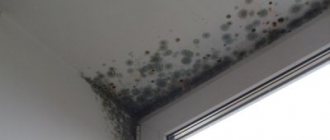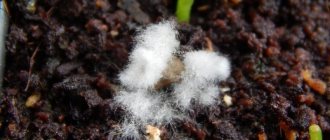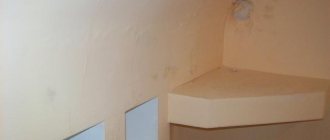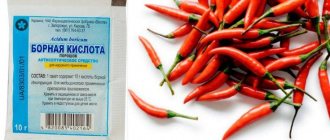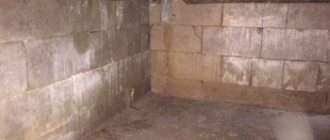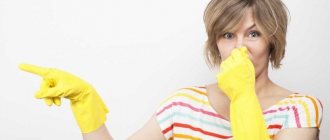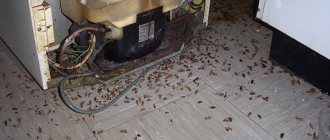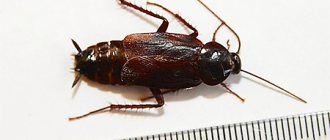My history
For many years we lived in an apartment whose walls were covered everywhere with black fungus. In the first years, this problem did not seem so global to us, and we did not particularly try to solve it. Of course, even a good renovation quickly ceased to please the eye, the wallpaper simply fell off, all this blackness did not look aesthetically pleasing, but tolerable.
Things put away in the closet were completely saturated with an unpleasant putrid odor, which could not be eliminated either with washing powder or with the help of perfume and cologne. Time passed, and living side by side with such an unpleasant neighbor took its toll.
Why is mold and mildew on walls dangerous?
First of all, our health, especially the health of children, came under attack. Old people, children, pregnant women, that is, people with weakened immune systems, are especially vulnerable.
Mold causes great harm to all living and non-living things. This is a microorganism that has a great impact on our well-being. If you and your loved ones have any unpleasant symptoms for no apparent reason, then most likely this is the result of the activity of mold fungi.
Through the respiratory tract, mold spores enter our body and settle there for many years. Constant colds, complicated by a runny nose, simply attacked us both in summer and winter. The child had a dry cough that did not go away for a long time, and nosebleeds appeared. It was necessary to do something urgently, because our lives were in danger.
Prevention after treatment
Dealing with harmful mold of any kind is a long process that requires a lot of labor. It is much easier to take measures to prevent the appearance of plaque on surfaces in the house:
- regularly ventilate all rooms, especially the bathroom and toilet;
- clean your home thoroughly and periodically disinfect it;
- monitor humidity, take an interest in this indicator in neighboring apartments, common basements;
- prevent the formation of condensation on windows, walls and doors;
- waterproof the basement if it is very wet;
- treat the surfaces with special antifungal agents;
- insulate the room when it freezes in the cold season.
Diseases caused by mold
During our stay in this house we were overtaken by such diseases as:
- Bronchitis
- Rhinitis
- Dyspnea
- Conjunctivitis
- Allergy
- Oncology
Moreover, they all did not appear immediately, but appeared gradually and even after we changed our place of residence. All this is because we got rid of the fungus outside, but it remained inside us.
We were lucky that no one inhaled these spores and the body did not become intoxicated, but serious mold poisoning can happen.
How to save yourself and what to do if you inhale mold
Pay close attention to your health. If you experience frequent illness, difficulty breathing, or dizziness, these could all be symptoms of mold poisoning. Do not delay visiting a doctor, the consequences can be very serious.
If you experience vomiting, nausea, and pale skin, then most likely you have inhaled mold. Immediately ventilate the room, or better yet, go out into the fresh air. If symptoms persist, you may need medical attention or even hospitalization.
Causes of fungus on walls
First, we decided to understand the reasons for the appearance of mold on the walls.
- Dampness. There was high humidity in the apartment. We dried the washed clothes right in the bathroom - in an unventilated, enclosed room. In winter, the heating was insufficient, so the air did not dry out. All this increased the dampness even more.
- Lack of ventilation. There were no ventilation systems or air conditioners installed in the apartment.
- Poor quality building materials. The house was built in the USSR, and low-quality materials were probably used. As it turned out, even the first residents of this apartment building complained about the appearance of black fungus.
Excessive indoor humidity
In addition to allergens, there are other important factors that can contribute to hypersensitivity or exacerbate allergy symptoms in sensitive children and adults. Humidity in a building is a risk factor for technical and health problems.
The source of unwanted moisture in a building can be external - the result of water penetrating into its structure through casings or the internal surface - the occurrence of condensation due to high humidity in the premises, low wall temperatures and insufficient ventilation.
Water from the soil can penetrate into the foundation of a building. This usually applies to older buildings. This may be due to, for example, a sewer obstruction or improper insulation of the building foundation. Water penetration through the roof, walls, doors or windows as a result of poor building maintenance or building faults is also a possible cause of indoor moisture. Flooding caused by corrosion of water or sewer pipes or loose pipe joints, as well as condensation on cold surfaces (exterior walls, corners, windows) are also common causes of unwanted moisture.
Signs of moisture in your home
Condensation is a problem with high indoor humidity, releasing more water into the air than ventilation does. This occurs during bathing, cooking, cleaning, washing and drying clothes. Without proper ventilation and air heating, unwanted indoor humidity cannot be removed. The main signals for this are:
- condensation (more than 5 cm) on the inner surface of the window glass;
- visible shape and wet spots on the floor, walls, ceiling.
Condensation on the inside surface of window glass (more than 5 cm) is more common in households with electric heating - 35.9% versus 27.9% for centrally heated homes and those relying only on natural ventilation - 30. 3% versus 26.3% for kitchens with hoods in addition to natural ventilation.
Methods of combating and how to treat walls against black mold
Having found out all the reasons for the appearance of mold, we began to try to eliminate them on our own. If you encounter such a problem, I recommend you the following:
Clean the walls from wallpaper, whitewash, plaster, in a word, tear off everything you can.
It is necessary to free the walls as much as possible from materials affected by fungus.
Buy an acetone solution
It can be found at any hardware store. Dip a sponge or rag (a cotton pad for small surfaces) in this solution and wipe the affected areas. This method helped us cope with the fungus, although not for long, but the result was not bad.
Ventilate the room well
Open all doors and windows. It is better to leave the apartment yourself so as not to inhale acetone fumes and equally dangerous mold fumes.
When you return home, try to thoroughly dry the walls and all surfaces that you treated.
This can be done using electric heaters (that’s what we did) or by heating the stove well if you have stove heating.
Install ventilation systems
We made just one, the simplest one, since we were planning to move soon. But I advise installing it in every room, and especially in places with high humidity (bathtub, toilet, closet).
Buy anti-mold impregnation and treat the room with it.
Only after this carry out a good, major overhaul. Whitewash and paint the walls in several thick layers.
I would also like to talk about furniture
It is also exposed to mold. We treated the furniture with an acetone solution, and this was our main mistake. Perhaps the fungus began to spread again from the cabinets and sofas. So don’t spare money and mercilessly get rid of old things, no matter how dear they are to you. The whole tragedy of our family is that we took all this furniture with us to our new house. All requirements for preventing the appearance of mold were met there (high-quality materials, ventilation and air conditioning), but after 1.5 years of residence, the fungus again attacked the walls. We had to get rid of it again, and we still threw out the old sofas and armchairs. Don't repeat our mistakes!
7. Separately, I would like to talk about furniture. It is also exposed to mold. We treated the furniture with an acetone solution, and this was our main mistake. Perhaps the fungus began to spread again from the cabinets and sofas. So don’t spare money and mercilessly get rid of old things, no matter how dear they are to you. The whole tragedy of our family is that we took all this furniture with us to our new house. All requirements for preventing the appearance of mold were met there (high-quality materials, ventilation and air conditioning), but after 1.5 years of residence, the fungus again attacked the walls. We had to get rid of it again, and we still threw out the old sofas and armchairs. Don't repeat our mistakes!
Toxins
Mycotoxins have systemic effects (headache, fatigue, etc.) and local (irritation of the eyes, skin, lining of the nose and bronchi). Their local actions also disrupt the barrier functions of damaged body tissues, which increases the penetration of allergens and infections, leading to more frequent illnesses from both allergic and infectious and even malignant diseases.
In extreme cases, high concentrations of mycotoxins in the air can cause a serious toxic reaction. Contact with materials containing mycotoxins may cause skin rashes.
Symptoms such as eye, nose and upper respiratory tract irritation, fatigue, cough and chest tightness are often related to the presence of glucan (a bioactive carbohydrate in the cell wall of mold) in the air.
A number of forms release mycotoxins (fungal toxins). These are:
- Aspergillus versicolor - can be found in house dust on the floor;
- Chaetomium globosum - mainly found on wood and cellulosic materials;
- Stachybotrys chartarum - Found primarily in damp drywall.
Where to go if mold appears in the apartment?
We tried to deal with the mold ourselves, but of course there are authorities that can help you. If you live in a municipal apartment, then the management company should deal with this issue. Only in practice it turns out that you can wait years for help from her.
Of course, housing office employees will try to absolve themselves of this responsibility and prove that the fungus arose through the fault of the residents. They may even appoint a commission or go to court, and you will also have to pay costs. Save your energy, time and nerves, because most likely you will have to fight alone.
It’s better to spend money on contacting a cleaning company, there will be people there ready to help. There are many such companies in the modern service market, of course, if you live in an urban area, in villages this is more difficult.
I hope my experience and advice will be useful to you. I never tire of repeating that mold is a creature that devours everything living and inanimate. It harms our body, and the fungus is especially dangerous for the health of our children, for their still unformed immunity, which is so vulnerable.
Don't let things go to chance, don't waste time. If the problem of black mold is just beginning to bother you, you need to immediately take active action.
When you need specialist help
In most cases, the use of folk recipes and household chemicals does not bring results. Only the visible part of the plaque is removed, the mycelium remains deep inside, so after some time, colonies of the fungus reappear in the room. Mold can be removed forever only with the help of specialists. Stages of fungus removal by professionals:
- assessment of area and degree of penetration;
- evacuation of fabric products and other undamaged items from the premises;
- destruction of all visible areas with fungus, including plaster;
- Microwave processing;
- application of fungicides;
- disinfection.
It is very difficult to defeat black mold, but it is possible. It is important to provide indoor conditions that prevent the appearance and proliferation of fungus. If mold does appear, it is necessary to remove it as quickly as possible using professional or improvised means.
5/5 — (1 vote)
